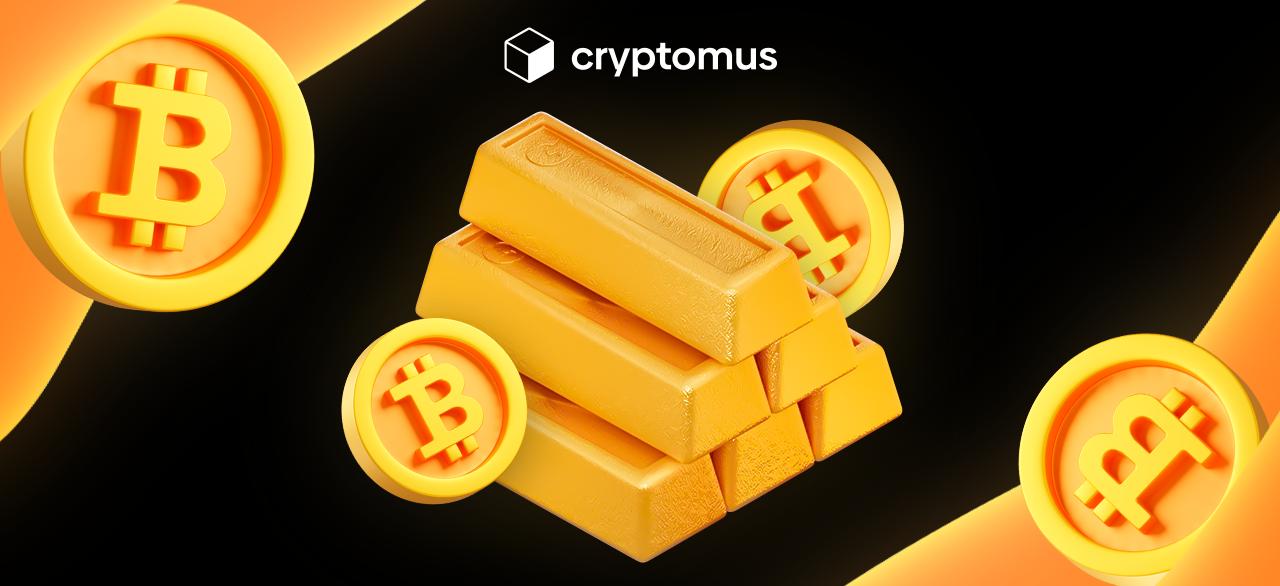
رمزارزهای اولیه: چه بودند؟
صرف نظر از موقعیت شما در دنیای مالی، این روزها احتمالاً یکی از کسانی هستید که بیش از یک بار نام ارزهای دیجیتال را شنیده اید. اما اولین ارز رمزنگاری شده چه بود و پس از آن چه شد؟ این چیزی است که ما امروز خواهیم فهمید.
اولین بار چه زمانی Crypto ظاهر شد؟
شاید باید از همان ابتدا شروع کنیم. ایده ایجاد چیزی شبیه به اولین ارز دیجیتال در جهان در ابتدا در سال 1983 در یکی از کنفرانس ها مطرح شد. در این رویداد، دیوید چاوم، رمزنگار آمریکایی مقاله ای منتشر کرد که در آن شکل اولیه پول مجازی رمزنگاری ناشناس را توصیف کرد. تئوری او پیشنهاد می کرد که امکان ایجاد یک ارز الکترونیکی وجود دارد که می تواند بدون ردیابی و بدون دخالت سازمان های متمرکز ارسال شود. و نظریه او ده ها سال بعد نتیجه داد. Chaum موفق شد سیستمی از پروتکلهای رمزنگاری به نام Digicash را توسعه دهد که شامل نرمافزار کاربر «برداشتن» اسکناسهای الکترونیکی از یک حساب بانکی و انتقال آنها به سایر کاربران با استفاده از امضای کور یا رمزگذاری کلید خصوصی بود.
در حالی که این کشف نوآورانه بسیاری را در آن زمان شگفت زده کرد و به Chaum اجازه داد تا شرکتی را برای تحقق پروژه راه اندازی کند، متأسفانه در آن زمان به طرز بدی شکست خورد. دیوید، در مصاحبه ای در سال 1999، این را به این واقعیت نسبت داد که پروژه DigiCash و سیستم تکنولوژیکی آن خیلی زود وارد بازار شد، قبل از اینکه تجارت الکترونیک به طور کامل در اینترنت یکپارچه شود.
اما تاریخچه ارزهای دیجیتال تنها پس از آن شروع به توسعه فعال خود کرد. دیگر رمزنگاران و توسعه دهندگان اکتشافات زیادی در سال های بعد انجام دادند که با هم به معنای واقعی کلمه اولین ارز دیجیتال را در سال 2009 به وجود آوردند.
اولین ارز دیجیتال چه بود؟
همانطور که قبلاً اشاره کردیم، اولین ارز دیجیتال جهان در سال 2009 ظاهر شد. و نام آن Bitcoin است. تاریخچه قدیمی ترین رمزارز در 31 اکتبر 2008، زمانی که کاغذ سفید (سند رسمی) منتشر شد، آغاز شد. این در حال توصیف عملکرد شبکه بلاک چین بیت کوین بود. و تنها چند ماه بعد، این ارز دیجیتال رسما منتشر شد و در دسترس همه قرار گرفت. اما چه کسی اولین سکه را خلق کرد؟ بیایید در ادامه بیشتر بدانیم!
اولین ارز دیجیتال را چه کسی ایجاد کرد؟
بیت کوین اولین بار توسط یک برنامه نویس کامپیوتر یا گروهی از توسعه دهندگان با نام مستعار ساتوشی ناکاموتو راه اندازی شد که هویت واقعی آنها حتی تا به امروز نیز تایید نشده است. در ژانویه 2009، ساتوشی اولین بلوک شبکه بیت کوین را استخراج کرد که 50 بیت کوین را استخراج کرد. در آن زمان، قدیمیترین توکن ارزشی نداشت: ارزش اولین سکه کریپتو در ابتدای فروش کمتر از 14 سنت بود.
کارکردهای اولین ارز دیجیتال چیست؟
مانند DigiCash، اولین پروژه رمزنگاری با هدف حل مشکلات مربوط به تمرکز سیستم های سنتی بود. و همانطور که می دانیم موفق شد. امروز بیت کوین برای ما فاش کرده است:
-
تمرکززدایی: با ظهور اولین ارز رمزنگاری شده، مردم عدم کنترل توسط دولت یا یک موسسه مالی را تجربه کردند. این امر حریم خصوصی بیشتر و همچنین امکان انجام معاملات بدون واسطه را فراهم می کند.
-
امنیت: صاحبان بیت کوین از کلیدهای عمومی و خصوصی برای دسترسی به کیف پول خود استفاده می کنند. اینها و روش های شبکه بلاک چین برای محافظت از اطلاعات از طریق استفاده از الگوریتم های کدگذاری شده، هش ها و امضاها به رمزگذاری داده های کیف پول و ایمن نگه داشتن وجوه کمک می کند.
-
جهانی شدن: اولین ارز رمزنگاری شده در جهان رسانه فیزیکی ندارد و در دنیای مجازی وجود دارد. این بدان معناست که می توان آن را از هر نقطه از جهان معامله کرد و بیت کوین اکنون به معنای واقعی کلمه به عنوان یک ارز جهانی عمل می کند.

چه ارزهای دیجیتال دیگری از زمان بیت کوین ظهور کرده اند؟
البته، بیت کوین با ایجاد سر و صدا در بین مردم، بسیاری از برنامه نویسان را به ایجاد قدیمی ترین رمزارزها ترغیب کرده است. اولین رمزارزها و ارزهای رمزنگاری شده که پس از بیت کوین راه اندازی شدند، اکنون «آلت کوین» نامیده می شوند. تعدادی از آنها وجود دارد:
-
Litecoin: این یک شبکه پرداخت غیرمتمرکز P2P با ارزی به همین نام است که توسط توسعه دهنده سابق گوگل چارلی لی در اکتبر 2011 تأسیس شد. هدف پروژه لایت کوین در ابتدا توسعه یک ارز دیجیتال با استفاده از ارزهای مختلف بود. الگوریتم استخراج برای این منظور، به جای SHA-256، مانند اولین ارز دیجیتال، از الگوریتم هش Scrypt استفاده شد. این امر زمان تایید تراکنش ها را کاهش داد و سیستم بیت کوین را بهبود بخشید.
-
ریپل: در سال 2013 پروتکل پرداخت ریپل معرفی شد. سیستم تسویه ناخالص بلادرنگ آن به طور موثر توسط برخی از برجسته ترین موسسات مالی متمرکز در سراسر جهان استفاده می شود. علاوه بر این، در حالی که بیت کوین قادر به پردازش 7 تراکنش در ثانیه است، پلتفرم ریپل ظرفیت 1500 تراکنش در ثانیه را دارد. بنابراین، توکن XRP یکی از توکن های پیشرو است که پس از اولین رمزارز کوین راه اندازی شد.
-
اتریوم: اتر در حال حاضر دومین توکن پر سرمایه پس از بیت کوین اول رمزنگاری شده است و بر روی بلاک چین اتریوم ایجاد شده است. اولین بلاک در سال 2015 دریافت شد. در آن زمان، اتریوم برای بسیاری به عنوان پلتفرمی برای ایجاد قراردادهای هوشمند شناخته شد. و این باعث شد که امروزه بیشترین ICO ها بر روی این پلتفرم برگزار می شود.
اینها تنها بخش کوچکی از ارزهای دیجیتالی هستند که از زمان ایجاد اولین رمزارز پدیدار شده اند. در زیر به شما بیشتر در مورد آنها خواهیم گفت و درک خواهیم کرد که چرا آنها ظاهر شدند و چه نقشی در دنیای ارزهای دیجیتال دارند.
چرا ارزهای دیجیتال به غیر از بیت کوین ظهور کردند؟
همانطور که تاریخ نشان می دهد، اولین تجارت فعال بیت کوین در قدیمی ترین صرافی ارز دیجیتال bitcoinmarket.com آغاز شد که اکنون وجود ندارد. اما یک سال بعد، بسیاری از مردم به کاستی ها و مشکلات بیت کوین پی بردند. برای حل آنها آلت کوین ها یا به اصطلاح «سکه های جایگزین» ایجاد شد. بیایید در نظر بگیریم که چه معایب بیت کوین باید توسط آلت کوین ها حل شود:
-
مدت تراکنش: الگوریتم اثبات کار و افزایش فعال تعداد بلاک ها، پردازش تراکنش در بیت کوین را کند کرد. بنابراین، برای سرعت بخشیدن به زمان تراکنش، انواع جدیدی از ارزهای رمزنگاری شده ایجاد شد که با استفاده از الگوریتم های دیگر شروع به کار کردند و حجم بلوک کمتری داشتند.
-
معایب ماینینگ: با افزایش علاقه به بیت کوین کریپتو اولیه، پیچیدگی و هزینه استخراج آن نیز افزایش یافت. آلت کوینها پروتکلهای استخراج جایگزینی را برای دسترسی بیشتر و بدون نیاز به منابع بزرگ الکتریکی و فناوری پیچیده ارائه کردهاند. اکنون، پروتکلهای اجماع مانند اثبات سهام یا اثبات تاریخچه به منابعی نیاز ندارند که استخراج هنوز انجام میدهد.
-
عدم کارکرد: در ابتدا وظیفه اصلی کریپتوکارنسی اول این بود که ابزاری برای معاملات تسویه حساب شود. آلتکوینها نیز این وظیفه را انجام میدهند، اما قابلیتهای بیشتری مانند ایجاد قراردادهای هوشمند یا امکان سهامداری را اضافه میکنند.
البته اینها همه مشکلاتی نیست که آلتکوین ها سعی در مبارزه با آن دارند. لیست راه حل هایی که آنها به ما ارائه می دهند بسیار گسترده است. به همین دلیل است که آنها در جهان بسیار محبوب هستند و ارزش زیادی دارند. فقط به اتریوم فکر کنید، که امروزه در رتبه دوم ارزش بازار قرار دارد و همچنان یکی از محبوب ترین ارزهای دیجیتال برای خرید و فروش در صرافی Cryptomus P2P است. همیشه میتوانید نحوه خرید اتریوم و سایر آلتکوینها را در مقالات blog ما یا در پلتفرم معاملاتی P2P خودش. به زودی آن را بررسی کنید!
به مقاله امتیاز دهید








نظرات
0
برای ارسال نظر باید وارد سیستم شوید